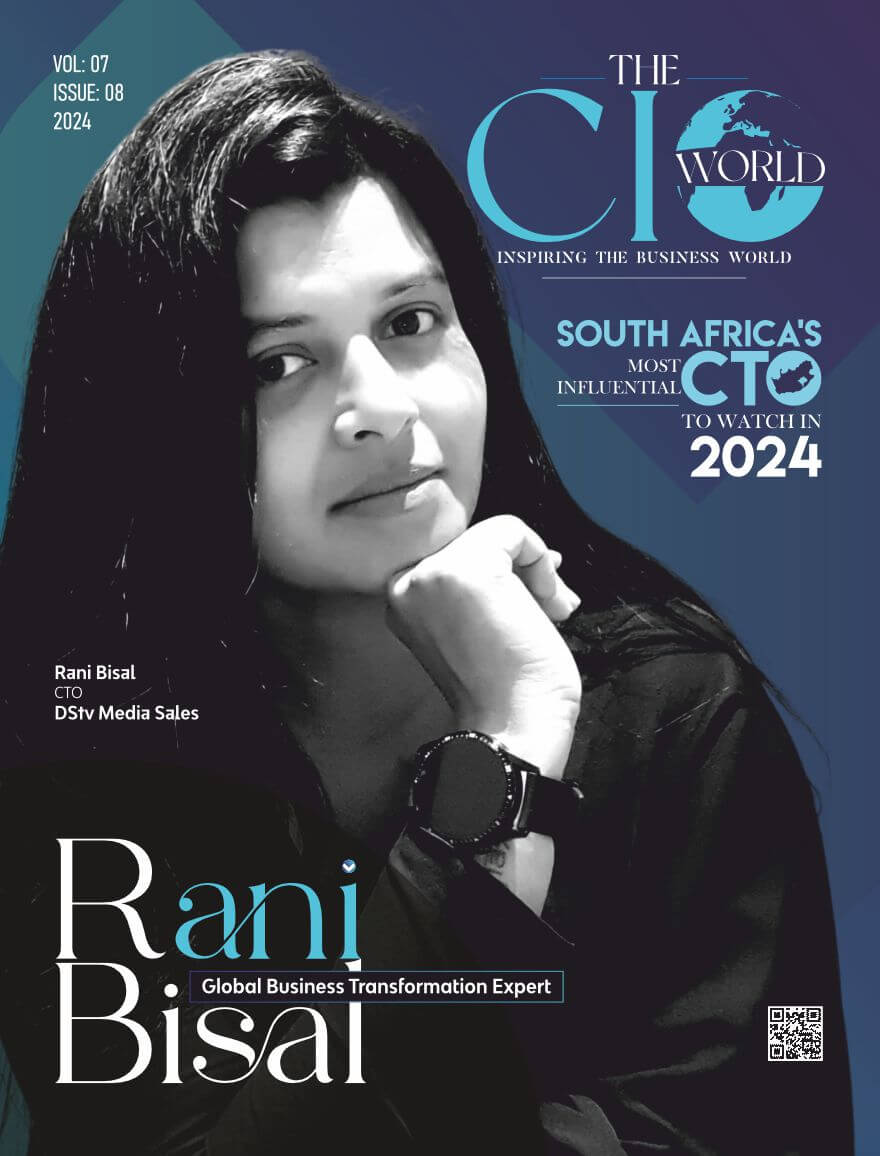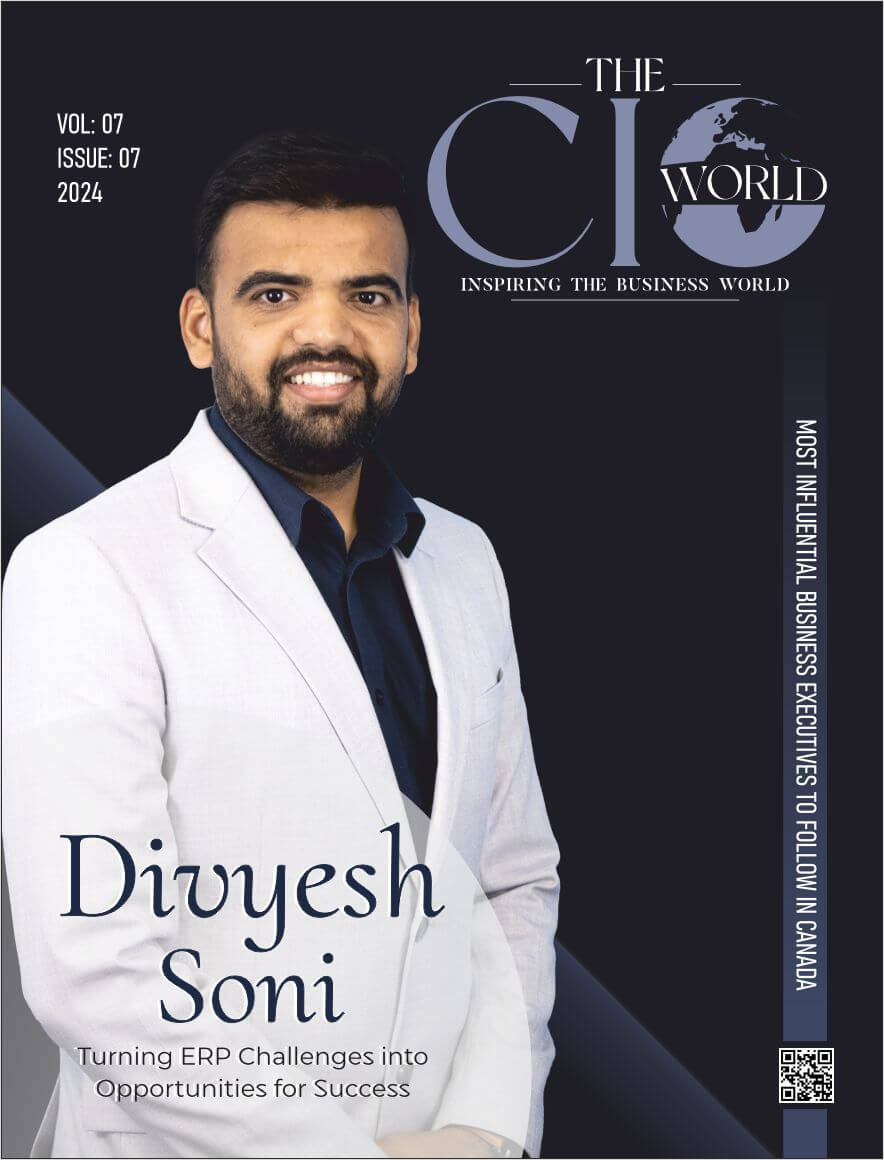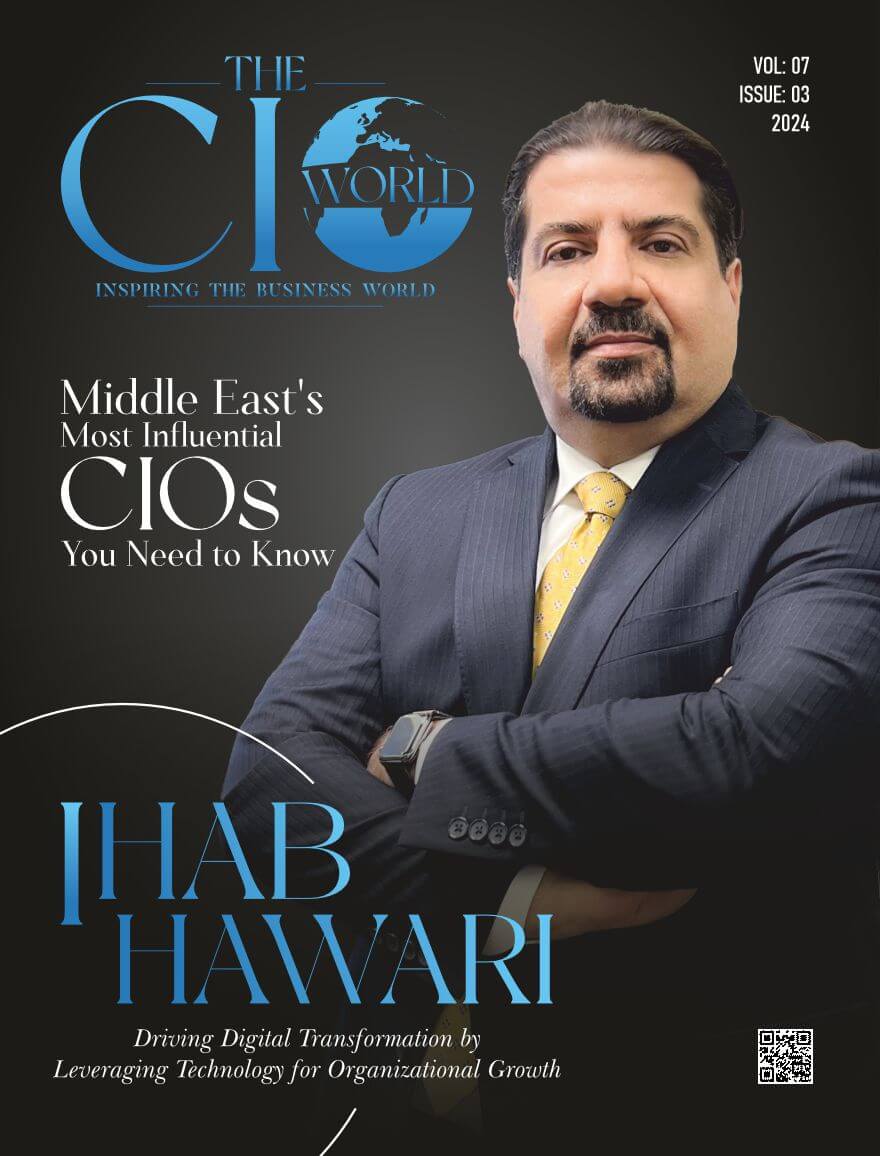Unleashing the Power of Technology to Create a Better World!
In a world driven by technological advancements, few individuals stand out as true trailblazers who embody the spirit of innovation and change.
Dr. Reem J Alattas, a visionary technologist, is one such individual, making remarkable contributions to the industry through her groundbreaking work and unwavering commitment to pushing boundaries. With a passion for harnessing the potential of technology to make a positive impact on society, Dr. Alattas has embarked on an exciting and fulfilling journey in the technology sector.
Since a young age, Dr. Alattas has been enamored by the endless opportunities technology provides. This captivation propelled her to pursue a Ph.D. in Computer Science and Engineering, concentrating on the creation of Evolutionary Modular Robots for space exploration. Her pioneering studies produced four USPTO patents and more than 20 published research papers, displaying her aptitude for transforming innovative concepts into concrete resolutions.
As a woman in a predominantly male-dominated industry, Dr. Alattas faced numerous challenges and stereotypes. However, these barriers only fueled her determination to break them down. Her exceptional talent and unwavering commitment to her work led to her becoming the first female Technical Account Manager at Microsoft Saudi Arabia, shattering glass ceilings and inspiring future generations of women in the industry. Dr. Alattas believes that diversity and inclusion are not just buzzwords but essential ingredients for driving innovation and creating a more equitable future.
With a vision to transform how humans interact with the world, Dr. Alattas has devoted herself to closing the divide between technology and human necessities. She has created innovative products like the Rumble Helmet and an Augmented Reality System that aids visually challenged individuals, which showcases her determination to boost safety and provide independence to those with visual impairments. Through the development of cutting-edge technologies that tackle real-world problems, she is creating a significant impact on the lives of people.
Through her belief in technology’s transformative power, Dr. Alattas is driven to inspire and empower others, particularly women, to pursue their passions in STEM fields and challenge societal norms. By breaking barriers and encouraging diversity, she unlocks untapped potential, paving the way for true innovation and progress. Dr. Alattas is more than just a technologist; she is a visionary leader who is shaping the future through her innovative ideas and unwavering determination. Her journey serves as an inspiration to aspiring technologists, demonstrating the limitless possibilities that await those who dare to dream big and push the boundaries of what is possible.
With her trailblazing spirit, commitment to inclusion, and dedication to leveraging technology for the betterment of society, Dr. Alattas is driving true innovation and leaving an indelible mark on the technology landscape. As she continues to forge ahead, she is poised to shape a future where technology empowers individuals, bridges divides, and creates a world that is more accessible, inclusive, and extraordinary.
Join us as we explore her incredible journey!
Unique Selling Points
SAP is a top-ranked provider of enterprise software solutions that helps businesses enhance their operations regardless of their size. They offer software, professional services, and knowledge in various fields, such as Intelligent Spend Management, Business Network (ISBN), Enterprise Resource Planning (ERP), Customer Relationship Management (CRM), Human Capital Management (HCM), and analytics.
Their USPs include:
Innovation:
Consistently striving to offer its clients the most advanced and top-of-the-line technology, this company has a remarkable history of innovation and is dedicated to maintaining its position as a pioneer in the enterprise software field.
Partnerships:
They have a strong network of partners that helps them to deliver their solutions to their customers. Their partners provide them with expertise in a variety of areas, and they help them to tailor their solutions to the specific needs of their customers.
Customer Focus:
The top priority of SAP is to deliver an exceptional experience to its customers. They give attentive ears to their clients and collaborate with them to create tailored solutions that cater to their requirements. SAP holds a remarkable reputation in the industry because of its consistent breakthroughs, extensive network of allies, and unwavering dedication to client satisfaction. They are a reliable partner for companies of any scale and are steadfast in their goal to assist them in achieving success.
In addition to the above, here are some of the reasons why SAP is a prominent name in the market:
- SAP boasts a vast clientele of more than 440,000 individuals across 180 nations.
- They exhibit a robust financial performance, having earned revenue of €27.7 billion in 2022.
- The management team is highly efficient and has a history of successful endeavors.
- Additionally, SAP is dedicated to sustainability and has implemented several schemes to minimize its ecological footprint.
SAP is an innovative organization that prioritizes its customers and sustainability. They are a reliable ally for companies of every scale and are dedicated to empowering them to thrive.
Changing the Game for Clients
SAP ISBN is a renowned global supplier of solutions for managing the supply chain and expenses. These solutions aid in optimizing the expenses of organizations, providing better visibility to their supply chains and ultimately leading to a reduction in their costs.
They offer a wide range of solutions, including:
Spend Analytics:
The spend analytics solutions provided by this organization aid in the acquisition of valuable insights from spend data. These insights can then be utilized to pinpoint areas where costs can be lowered, establish stronger relationships with suppliers, and enhance strategic decision-making processes.
Spend Management:
Organizations can enhance their spend management efficiency by utilizing spend management solutions. These solutions facilitate the automation of the procurement process, enable improved negotiations with suppliers, and ensure effective management of supplier contracts.
Supply Chain Management:
Organizations can enhance their supply chain visibility with the assistance of supply chain management solutions. Such solutions facilitate the tracking of inventory levels, order management, and demand forecasting.
Cost Reduction:
Organizations can lower their expenses with the assistance of cost-reduction solutions. This can be achieved by enhancing efficiency, decreasing waste, and bargaining for better prices with suppliers. Their solutions have a positive impact on the industry and their clients in a number of ways. They help to:
Increase Transparency:
The solutions offered contribute to enhancing transparency in the process of spending and supply chain. As a result, it aids in minimizing the occurrence of fraud and waste.
Improve Efficiency:
By implementing their proposed solutions, the effectiveness of the expenditure and supply chain procedures can be enhanced. Consequently, this could result in reduced expenses and augmented customer satisfaction.
Enhance Collaboration:
The solutions offered can facilitate improved collaboration across various departments within the organization, ultimately resulting in enhanced decision-making and superior outcomes.
Their solutions are used by a wide range of organizations, including:
- Fortune 500 companies
- Governments
- Non-profit organizations
- Small and medium-sized businesses
They are committed to helping their clients to succeed. They offer a wide range of services, including:
Implementation: Assisting clients in implementing their solutions is their specialty. Their expertise encompasses training, support, and consultation services.
Support: Clients receive round-the-clock assistance from the company, with options for contact, including phone, email, and online support.
Consulting: The company provides consulting services to assist its customers in maximizing the potential of their solutions. Their services entail aiding clients in recognizing opportunities to enhance their spending and supply chain management.
Mastering Strategic Planning
Reem adopts a well-organized and futuristic methodology when it comes to strategizing for a novel business venture.
Here’s an overview of her approach:
- Define Clear Objectives: The first step in the new business venture is to establish clear objectives. This involves comprehensively analyzing the market landscape, identifying the target audience, and determining the value proposition of the offering. Clear objectives serve as a basis for strategic planning and decision-making.
- Conduct Market Research: Comprehensive market analysis is essential to acquire a deeper comprehension of customer demands, market patterns, and rivals. By scrutinizing market dynamics, customer concerns, and innovative technologies, businesses can pinpoint potential opportunities and preempt any potential obstacles. This evaluation plays a pivotal role in forming their plan and ensuring that they position their product or service efficiently.
- Develop a Strategic Roadmap: After conducting market research and analyzing objectives, a strategic roadmap is developed to outline essential initiatives and milestones for the new venture. The roadmap serves as a compass to allocate resources and track progress, with a timeline, key performance indicators (KPIs), and actionable steps to achieve goals.
- Engage Cross-functional Collaboration: She strongly values the potential of cross-functional collaboration, and thus, she leverages the expertise and perspectives of experts from different teams and departments. This collaborative strategy enables them to obtain a broad range of insights, promote innovative ideas, and establish coherence throughout diverse business areas.
- Manage Change Effectively: Introducing a novel business venture typically requires overseeing alterations within the organization. Reem employs a methodical approach to managing change, which encompasses effective communication, training initiatives, and engaging stakeholders at different levels. By raising awareness, addressing apprehensions, and actively involving staff members in the process, Reem can promote acceptance and facilitate a seamless transition.
- Monitor and Adapt: After launching the new venture, she keeps a close eye on critical metrics and indicators to measure progress against the strategic plan. This enables her to pinpoint successful areas and those that need fine-tuning. By implementing regular feedback loops and ongoing assessments, they can modify their strategies and tactics as necessary.
Allow us to illustrate how she effectively implemented a change in the company through an instance.
As a change leader within the organization, she initiated a comprehensive digital transformation to revolutionize the procurement processes. She acknowledged the enormous potential of technology to enhance operations and boost efficiency and, thus, led a cross-functional team to implement advanced digital tools and platforms.
In the beginning, she performed a comprehensive evaluation of the current procurement procedures, pinpointing troublesome areas and opportunities for enhancement. With a definite objective, she worked closely with stakeholders from various departments to acquire approval and guarantee agreement. By utilizing effective methods for managing change, such as communication, training, and continuous assistance, she expertly steered the organization through the transition. The outcome was a completely digitized procurement system that made workflows more efficient, enhanced transparency, and facilitated decision-making with data-driven insights. This transformation not only optimized efficiency but also enabled the company to stay ahead in a swiftly changing digital landscape.
Her adeptness in overseeing organizational changes and spearheading digitalization initiatives in procurement operations has effectively demonstrated her capacity to tackle intricacies, garner stakeholder backing, and furnish concrete outcomes.
Mastering the Art of Adaptation
Reem, a leader in the thought tech industry, is dedicated to meeting the demands of the constantly evolving field. The key to this lies in adopting a proactive and adaptable mindset. She firmly believes that success depends on continuous learning and staying at the forefront of emerging technologies. To maintain focus, Reem prioritizes ongoing research and development, keeping an eye on the latest trends, innovations, and market demands. By comprehending the ever-changing needs of the industry and customers, she can identify opportunities early on and position her organization for future success.
Creating a culture of innovation and collaboration is essential, according to Reem. She motivates her team to generate fresh concepts, question established practices, and experiment with emerging technologies. By establishing an environment that fosters creativity, they can respond quickly to shifting demands and capitalize on new opportunities. In addition, establishing strategic partnerships and actively engaging with industry experts helps them remain connected to the wider ecosystem. Collaborating with similarly motivated individuals and organizations allows them to take advantage of collective knowledge and insights, which aids them in anticipating future challenges and devising innovative solutions.
In today’s rapidly changing industry, being agile is essential. She promotes an agile mindset across the organization, empowering them to quickly adapt to market shifts and customer needs. By adopting agile methodologies and iterative approaches, they can deliver solutions with greater efficiency, constantly refining and enhancing them based on feedback. To meet future demands, it’s crucial to have a forward-thinking vision, a commitment to ongoing learning, adaptability, innovation, and collaboration. By embracing these principles, they can navigate the constantly evolving technology landscape, anticipate future needs, and maintain their leadership position in the industry.
Proven Fundraising Strategy
In this piece, Reem outlines the primary elements of her plan for raising funds. Let’s take a closer look at the essential stages.
Define Your Funding Needs: Ascertain the amount of capital needed and the purpose for which it will be utilized. Construct a comprehensive comprehension of your monetary necessities and objectives for every round of financing.
Refine Your Business Plan: Improve and polish your business strategy to match your funding needs. Clearly express your unique selling point, intended audience, competitive edge, expansion plan, and monetary forecasts. Emphasize the possible ROI for potential financiers.
Build a Strong Team: Potential investors frequently assess the skills and background of your team. It is crucial to have a proficient and dedicated team with diverse abilities and a history of accomplishments. Emphasize their proficiency and successes to establish trust and assurance in potential investors.
Develop a Compelling Pitch Deck: Develop an all-inclusive and visually captivating pitch deck that effectively showcases your business and investment prospect in a persuasive way. It should comprise significant details about your market, product or service, competitors, the potential for growth, and financial forecasts. Articulate your plans for utilizing the funds and showcase your in-depth knowledge of the market and your intended audience.
Identify Potential Investors: Perform extensive investigation to pinpoint potential investors who exhibit a keen interest in your field or area. Seek out angel investors, venture capital organizations, strategic collaborators, or crowdfunding platforms that are in line with your enterprise’s objectives and principles.
Network and Establish Relationships: Utilize your professional connections and industry network to secure introductions to potential investors. Take part in industry events, conferences, and other networking opportunities to broaden your network of contacts. Initiate conversations and cultivate relationships with potential investors to establish a solid foundation of trust and credibility.
Approach Investors Strategically: Customize your strategy for every investor based on their investment preferences. Conduct an analysis of their investment portfolio, areas of interest, and investment philosophy to ensure that your business objectives are in sync. Tailor your communication to showcase why your venture is in line with their investment objectives and how you can bring value to them.
Nail Your Investor Pitch: Craft a concise and persuasive pitch that effectively conveys your unique vision, the market potential, what sets you apart from competitors, and the growth opportunities. Emphasize important metrics, past milestones, and plans for future growth. Anticipate and tackle any possible investor doubts or objections.
Due Diligence Preparation: To prepare for potential investor inquiries, it is important to gather and organize key documents. These may include financial statements, legal contracts, intellectual property information, customer testimonials, and any other relevant information that investors might request during due diligence.
Negotiate Terms and Close the Deal: If investors show interest, it is recommended to enter into negotiations to establish investment terms, valuation, and other relevant conditions. Seeking legal counsel is highly advisable to ensure that the agreed-upon terms and conditions are both fair to investors and protect your interests. After the terms are agreed upon, collaborate with legal counsel to finalize the investment agreements and complete the transaction.
Maintain Investor Relations: Once you have obtained funding, it’s important to cultivate a positive relationship with your investors. Keep them informed on the progress of your company, including financial performance and key milestones achieved. Make sure to actively involve your investors by seeking their advice and expertise when necessary. By fostering strong connections with your investors, you can make future funding rounds easier to secure.
It’s worth highlighting that the fundraising process involves multiple intricate stages and requires a continuous review and refinement of your approach. The attainment of your fundraising goals is contingent on various factors, including the prevailing market conditions, the viability of your business proposal, and the effectiveness of your implementation. It’s prudent to consult with fundraising experts, specifically legal and financial specialists, to guarantee that you comply with the relevant regulations and adhere to the best industry practices.
Driving Business Success
Juggling various responsibilities within a company can prove difficult, but employing effective methods can guarantee optimal utilization of all aspects for the company’s triumph.
Here’s a framework to help you manage multiple roles effectively:
- Prioritize and Delegate: Begin by identifying the crucial aspects that demand your attention and concentration. Rank these areas according to their significance in ensuring business triumph. Assign tasks and duties to capable team members, allowing you to have more time to concentrate on crucial areas.
- Set Clear Goals and Objectives: It is vital to set well-defined aims and targets for every position you hold. These objectives should be in sync with the enterprise’s comprehensive plan. Furthermore, you need to divide these objectives into achievable tasks and establish a schedule to monitor development.
- Time Management and Organization: Maximize your time management skills by allocating dedicated time blocks for each of your roles. Boost your organization skills by utilizing productivity tools and techniques such as creating a list of tasks, setting up reminders, and utilizing project management software. Avoid excessive multitasking and concentrate on one role at a time to maintain your productivity levels and steer clear of potential burnout.
- Effective Communication: It is essential to uphold honest and transparent communication with both the team and stakeholders. Articulate expectations clearly, offer constructive feedback and make sure that everyone is in agreement with the objectives and goals of their respective roles. Foster regular updates on progress and constructive feedback sessions to keep everyone informed and tackle any hurdles in a timely manner.
- Seek Support and Collaboration: Be aware of when you require support and reach out to your colleagues or team members for assistance. Cultivate a cooperative work atmosphere where knowledge and ideas are exchanged. Make the most out of the abilities of your team to optimize the success of each aspect.
- Regular Evaluation and Adjustment: Regularly analyze the output of every department and measure their congruity with the company’s objectives. Recognize the sectors that require enhancement or modification and carry out essential measures. Stay flexible and versatile, prepared to modify and adjust as the business environment progresses.
- Self-care and Work-life Balance: Prioritizing self-care and maintaining a healthy work-life balance is crucial when handling various roles. It’s important to take frequent breaks, practice stress management techniques, and allocate time for personal activities and relationships. Keep in mind that your well-being directly affects your effectiveness as a leader in all areas.
To successfully manage multiple roles, one must plan carefully, communicate clearly, delegate effectively, and be self-aware. Striking a balance between assuming duties and avoiding overwhelming oneself is crucial to optimizing all aspects of business success.
Leadership Under Pressure
Reem has faced challenging scenarios that demanded tough choices. In a crucial project from a previous job, they encountered a significant setback that jeopardized the entire timeline and deliverables. Reem had to make a tough call regarding whether to persist in investing time and resources to save the project or pivot to an alternative solution. To tackle this predicament, Reem collected all accessible information and knowledge to evaluate the feasibility and potential consequences of each option. She consulted with vital stakeholders, such as team members and senior executives, to obtain various viewpoints and guarantee a comprehensive comprehension of the situation.
To ensure that her decision was well-informed, she established a methodical framework for assessing the advantages, drawbacks, and lasting effects of each option. This entailed scrutinizing the financial ramifications, weighing the impact on team spirit and workload, and appraising each alternative’s compatibility with their all-encompassing strategic goals. Acknowledging the pressing nature of the matter, she acted definitively while remaining truthful and inclusive in her decision-making procedure. She communicated the situation and the potential alternatives to the team, imparting them a clear comprehension of the reasoning behind her decision and the probable consequences.
During the entire procedure, she kept the channels of communication open, making sure that every team member was listened to and comprehended. She stressed the significance of gaining knowledge from obstacles and stimulated a culture of perseverance, innovation, and steady progress. Eventually, the choice to pivot turned out to be accurate. This enabled them to redirect their attention and resources towards a more feasible solution, guaranteeing the accomplished realization of the project within the modified timeline. The encounter also provided a valuable lesson, emphasizing the significance of flexibility and backup planning when confronted with unforeseen difficulties.
Navigating tough choices as a leader necessitates a blend of rational reasoning, persuasive communication, and a readiness to undertake measured risks. Through exploiting accessible assets, eliciting feedback from involved parties, and remaining candid, they can steer their teams through demanding circumstances and lead them towards triumphant results.
Power of Innovation
Encouraging creativity and promoting innovative thinking among team members play a pivotal role in propelling technological advancements and maintaining competitiveness.
Here’s her approach to building and managing a team that can execute innovative visions:
Cultivate a Culture of Innovation
Lead by Example: Exhibit enthusiasm for inventiveness and imaginative troubleshooting. Foster and flaunt your own readiness to take chances and experiment with fresh methods.
Promote an Open and Inclusive Environment: Establish an environment of security where all members of the team feel at ease to share their thoughts and viewpoints. Encourage a way of life that values respect, attentive listening, and positive criticism.
Encourage Experimentation: Encourage your team to pursue fresh concepts and remedies. Allocate space for experimentation and acknowledge the benefits of learning from mistakes.
Recognize and Reward Innovation: Recognize and value the innovative contributions of your team members. Develop and execute programs or rewards that promote and acknowledge imaginative thinking.
Encourage Cross-functional Collaboration
Foster Interdisciplinary Collaboration: Facilitate collaboration among team members from diverse backgrounds by encouraging them to work together on projects. Foster the exchange of ideas and unique perspectives by establishing channels for cross-functional communication and knowledge sharing.
Break Down Silos: Promote collaboration and transparency to break down barriers between departments or teams. Nurture a culture that facilitates the free flow of knowledge throughout the organization, igniting creativity and enabling innovation.
Provide Resources and Support
Allocate Dedicated Time and Resources: Recognize the importance of innovation by allocating dedicated time and resources for team members to explore new ideas, conduct research, and experiment with emerging technologies.
Provide Access to Tools and Technologies: Make sure your team can utilize the essential tools, software, and technologies needed to fuel their creative initiatives. Keep abreast of the latest developments and equip your team with the appropriate resources.
Communicate and Align on Vision
Clearly Communicate the Vision: Make sure your team comprehends the organization’s comprehensive vision, aims, and objectives. Consistently convey the strategic direction and illustrate how their duties add to the larger context.
Encourage Dialogue and Collaboration: Promote transparent communication channels among team members to express their thoughts, worries, and opinions. Stimulate collective idea generation, group gatherings, and individual dialogues to cultivate cooperation and harmony.
Developing and overseeing a team that fosters innovation is an ongoing undertaking. Consistently evaluate and modify your approaches to cultivate an innovative environment that is in line with your goals and vision.
Expert Tips on Incorporating Industry Trends
Remaining competitive and driving innovation requires staying up-to-date with industry trends. To achieve this, consider implementing these strategies to keep yourself informed and incorporate the latest industry trends into your business strategy.
- Continuous Learning: Prioritize your learning by allocating time to keep yourself informed about the latest tech news, advancements, and upcoming trends. Pursue established tech journals, enlist for pertinent newsletters, and ensure to follow her podcast named “Reem Tech.”
- Attend Conferences and Events: Take part in technology and innovation-focused industry conferences, trade shows, and events. Such gatherings present excellent chances to make valuable connections and gain direct insights into new technologies, products, and leading thinkers.
- Network and Collaborate: Establishing a robust professional network in your field is crucial. You can do this by attending meetups, becoming a member of appropriate professional organizations, and engaging in virtual communities. Interacting with colleagues and specialists can offer you worthwhile prospects for exchanging knowledge, working together, and getting acquainted with emerging trends.
- Establish Partnerships: Engage in cooperation with tech vendors, emerging enterprises, and research institutions. Aligning with forward-thinking firms and groups enables you to utilize their proficiency, acquire new technologies, and acquire knowledge about the latest research and development.
- Monitor Technology Roadmaps: Keep yourself updated on the technology roadmaps that are released by prominent companies and organizations. These roadmaps contain details about their upcoming product releases and innovations, which can give you a glimpse of the upcoming trends and technologies that may impact your industry.
Continuously staying informed about industry trends is crucial. To effectively integrate them into your business strategy, it’s important to adopt a mindset of adaptability, open-mindedness, and ongoing learning.
Expert Advice for Aspiring Entrepreneurs
Here are some suggestions she likes to pass on to aspiring entrepreneurs:
- Embrace Your Passion: Select a business concept that matches your enthusiasm and hobbies. Establishing a prosperous enterprise necessitates commitment and persistence; therefore, it is essential to concentrate on something that you are genuinely interested in.
- Solve a Problem: Identify a pressing problem or a gap in the market that your business can address. Successful ventures are built on providing solutions that add value to customers’ lives.
- Conduct Thorough Market Research: Understand your target market, its size, demographics, and needs. Conduct market research to validate your business idea, identify competitors, and assess potential demand.
- Develop a Solid Business Plan: Create a comprehensive business plan that outlines your mission, vision, target market, marketing strategy, operational details, and financial projections. A well-structured plan will guide your decision-making and attract potential investors.
- Build a Strong Team: Surround yourself with talented individuals who complement your skills and share your vision. Hire people with diverse backgrounds and expertise, fostering a collaborative environment that encourages innovation and creativity.
- Seek Mentorship and Networking Opportunities: Connect with experienced entrepreneurs and industry experts who can provide guidance and advice. Attend conferences, join industry associations, and leverage online platforms to expand your network and learn from others’ experiences.
- Focus on Customer Experience: Prioritize delivering exceptional customer experiences. Understand your customers’ needs, provide excellent customer service, and constantly seek feedback to improve your products or services.
- Embrace Innovation and Adaptability: Embrace a mindset of continuous innovation and adaptability. Stay updated with industry trends, emerging technologies, and changing customer preferences. Be open to pivoting your business model when necessary.
- Build a Strong Online Presence: In today’s digital age, establishing a strong online presence is crucial. Invest in a professional website, utilize social media platforms, and leverage digital marketing strategies to reach a wider audience and build brand awareness.
- Manage Finances Wisely: Develop a sound financial management strategy. Keep track of your expenses, maintain accurate accounting records, and seek professional advice when needed. Monitor key financial metrics and focus on profitability and sustainability.
- Be Resilient and Persistent: Entrepreneurship is a journey filled with challenges and setbacks. Develop resilience and the ability to bounce back from failures. Learn from your mistakes, stay persistent, and maintain a positive mindset.
- Seek Feedback and Iterate: Actively seek feedback from customers, mentors, and your team. Use this feedback to iterate and improve your products or services. Embrace a culture of continuous learning and improvement.
Reem emphasizes that the tips provided are only a starting point and that each entrepreneurial journey is unique. It is important to customize these suggestions to your own situation, maintain flexibility, and continuously seek to improve and expand your skills as a business owner.
Satisfied Clients and Industry Awards
2019:
- Connecticut Women of Innovation Finalist.
2018:
- Tri-State Arab American Association of Engineers and Architects (AAAEA) Scholarship Award.
- CEO Global Conference & Pitch Competition Finalist. CEO Global Conference & Pitch Competition Finalist.
2017:
- Pitch Perfect Season 1 Champion.
- CT-Next Entrepreneur Innovator Grand Prize & Judges Favorite Award.
- Best Presentation for Rumble Helmet Pitch in the CT Business Venture Competition.
2016:
- Honorable Mention for Skin Scan: Mobile App for Real-Time Automatic Melanoma Detection in Launch Weekend.
2015:
- Outstanding Graduate Student Poster Award for “Application for Big Data Visualization using Google BigQuery and Google Charts” Poster in the American Society for Engineering Education (ASEE) North East Conference at North Eastern University.







